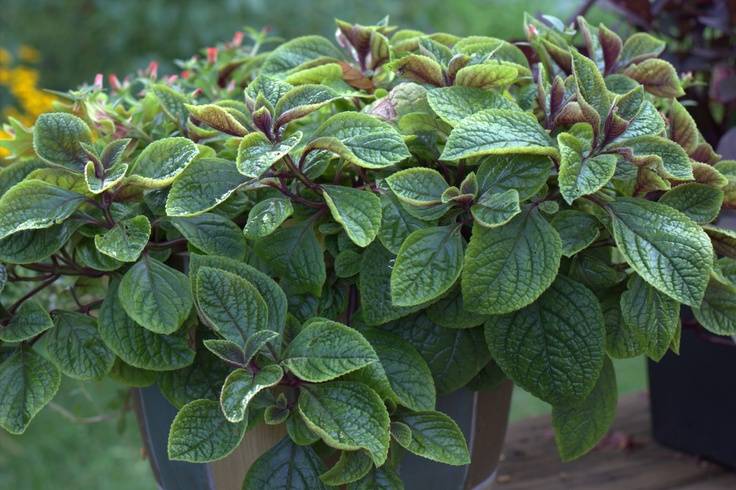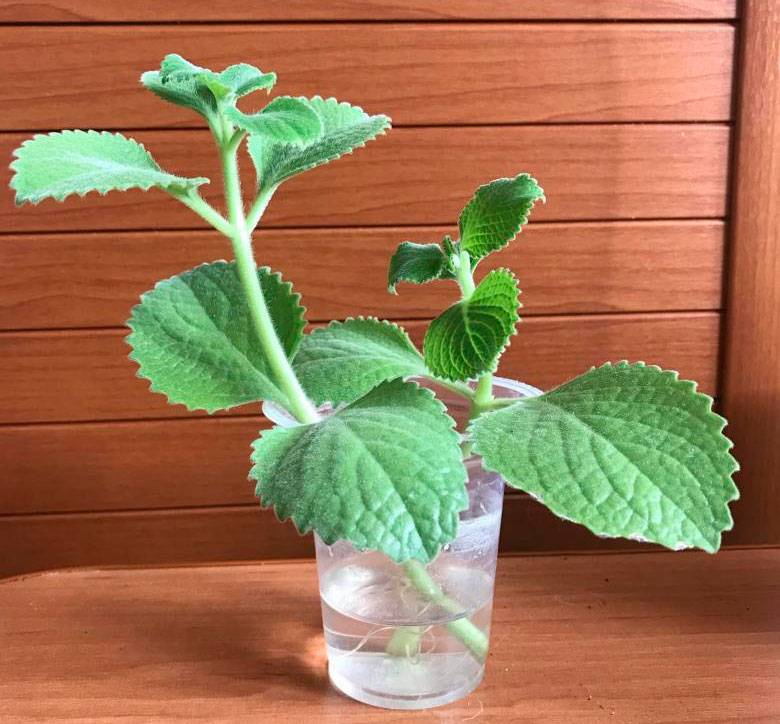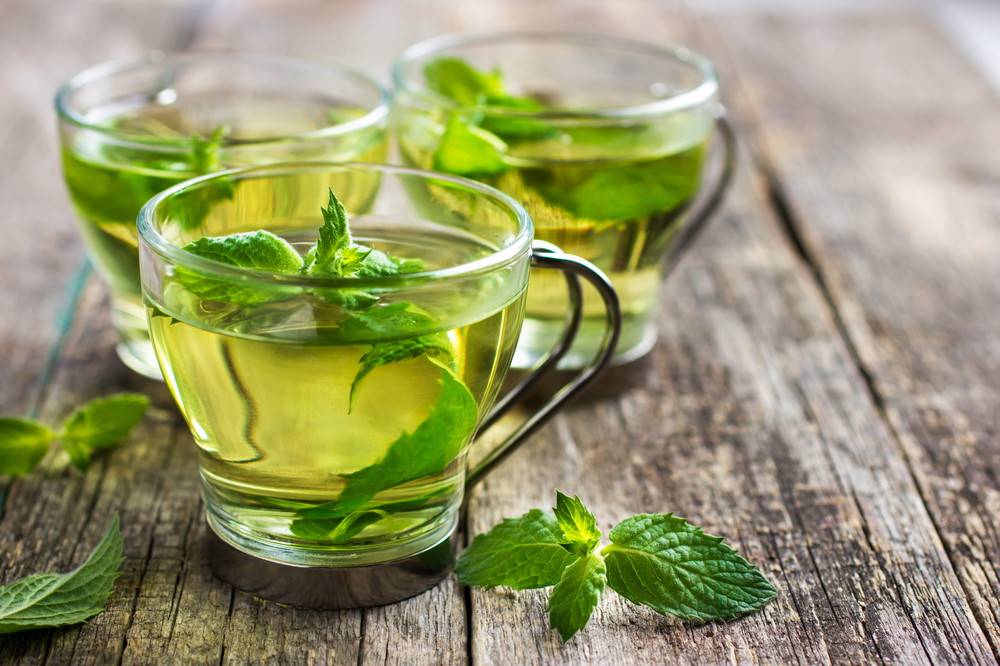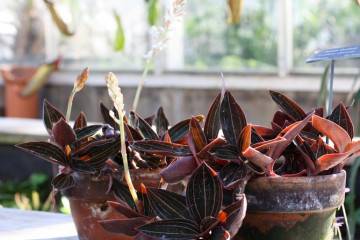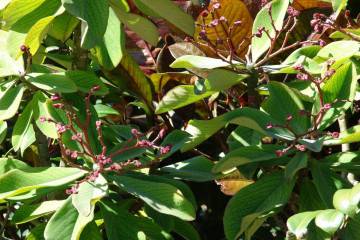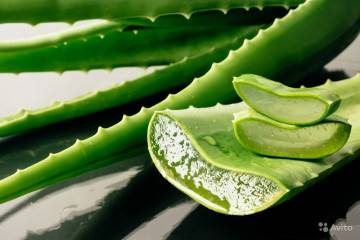Plectrantus: home care and main types
Content:
What kind of plants are not grown at home. For example, the popular indoor flower Plectrantus was so fond of the inhabitants of the Scandinavian countries that they began to call this plant the Swedish ivy.
Main types
Plectrantus, or indoor mint, is a perennial plant that belongs to the Lamiaceae family. The homeland of culture is the subtropics. There are many types of plectrantus, which differ from each other in appearance characteristics.
Plectrantus Ertendahl
This plant has carved leaves of an unusual shade. On the one hand, the leaf plate is bright pink, on the other - a rich green color. The plant exudes a pleasant, light camphor aroma. It grows in height up to 40 cm. In order for the flower to grow more bushy, it is necessary to regularly pinch the shoots.
Two varieties of this variety are popular among flower growers - Limelight (leaves are golden) and Uwongo (foliage is green-golden).
Felt plectrantus
It grows in height up to 75 cm. The trunk becomes woody as the plant grows. The stems are drooping type. Leaves are fleshy, ovoid. Leaves and stems pubescent. As a result of this pubescence, the bush looks soft. The flowers are small, purple in color.
Plectrantus Mona Lavender
This variety belongs to hybrids. From a distance, plectrantus can be confused with lavender. Shoots are erect, brownish brown. The leaves are ovoid, the edges are carved. The upper part of the leaf plate is emerald, the lower side is purple, pubescent. Inflorescences are densely located on the shoots. Lavender flowers, tubular. Inflorescences bloom in early September.
Other varieties of culture:
- Fragrant plectrantus or plectranthus amboinicus grows in height up to 200 cm. Foliage and shoots are light green. The leaves are heart-shaped. Inflorescences are light purple in color, exude a light pleasant aroma.
- Plectrantus southern is distinguished by its unpretentious care. Shoots of drooping type, leaves of a rounded green shade. The surface of the sheet is smooth, glossy. It emits a faint aroma.
- Plectranthus oakleaf is characterized by thick brown shoots. The leaves of a dark green color are similar in shape to oak. The surface of the leaf plate is pubescent. If you wrinkle a leaf in your hands, you can feel a light coniferous aroma.
- Plectrantus variegated is a perennial herbaceous houseplant. It is characterized by elongated, heart-shaped leaves of a green hue with a white border around the edges. The edges are jagged. Can be used as an ampelous plant.
- Plectrantus shrub or it is also called molar tree. It grows to a height of about 100 cm. The stems are pubescent, the leaves are emerald. The plant exudes a rich mint scent. The flowers are dark blue.
- Plectrantus ciliate is a low plant up to 60 cm. It can be grown both in the house and on the street. Shoots covered with purple hairs. Foliage of a dark green ovoid shade. Flowers can be either single, or grow into the composition of the brushes. Inflorescences are pale purple or white.
Mint plectrantus harmoniously fits not only into the home interior, but is also often used to decorate gardens and backyard plots.
Home care
Plectrantus mint and all other varieties are not capricious in their care. It is enough to create favorable conditions for the growth of the culture and do not forget to regularly feed the plant.
Homemade mint plectrantus prefers abundant and frequent watering. It is possible to irrigate the soil after the topsoil has dried by 20-30 mm. The main thing is to prevent stagnation of water and dryness of the soil.
Rainwater or melted snow will also work. The main thing is that rainwater and melted snow are collected in an environmentally friendly place, away from the city and roadways.
The soil
The plectrantus plant is not demanding on the composition of the soil. Suitable for planting a universal substrate for indoor plants. Before planting in purchased soil, it is worth adding a little sand to make the soil looser. A good drainage layer is also required.
It is best if the substrate is fertile with an acidity level within 6.0. You can do it yourself. This will require river sand, sod and leafy soil, humus. All ingredients must be taken in equal amounts.
Before planting, you need to choose the right pot. It may not be very wide, the main thing is that it is deep, since the plant has a powerful root system.
Top dressing
The plectrantus flower, the care of which implies the obligatory application of fertilizers, responds well to both mineral and organic fertilizing. During the growing season, every two weeks, complex mineral fertilizers for deciduous plants are applied to the soil. You can also add wood ash, mullein and rotted manure to the soil. Top dressing can be alternated. During the dormant period, the plant does not need fertilizers.
The rest period for the plant begins with the onset of cold weather. It's mid-November. It lasts until spring. When grown in warm regions, the dormancy period is several weeks shorter.
The optimum temperature during the growing season is from +19 to +25 degrees. In summer, you can move the pots outside or on the balcony. In winter, it is better to keep the bush cool. The favorable temperature during this period is from +13 to +16 degrees.
The plectrantus plant prefers diffused light. Direct sunlight is harmful to the flower. The culture also tolerates shade well. In winter, at an appropriate air temperature, additional lighting is not required for mint, a short daylight hours will be enough.
Plant transplant
Caring for a plectrantus at home involves transplants. The number of transplants depends on the age of the plant and how fast it grows. Young bushes are transplanted every year into large pots. Mature, mature plants can be transplanted every 2-3 years.
The process of transplanting a plant into a new soil:
- Remove the plant from the pot.
- If it is an adult plant, the root system should be rinsed and examined. If there is damage or decayed parts, they must be cut off. Treat the cuts with potassium permanganate.
- When transplanting young bushes, you need to take a larger pot than the previous one.
- Fill drainage to the bottom of the pot, then fill it halfway with soil.
- Place the flower and fill the pot with soil to the top.
- Tamp down the soil slightly. If necessary add some more soil.
- The transplant ends with abundant watering of the bush.
If the plant is very mature, it is better not to replant it, but to renew it.With age, indoor mint loses its decorative properties.
Another important factor when growing a crop is pinching. If this is not done, the bush will not grow as lush as we would like. Shoots will be ugly stretched up one by one. You need to pinch strongly elongated shoots. Thanks to this, the plant will look much more luxuriant and bushy.
Reproduction methods
Old bushes are losing their decorative effect, so they need to be constantly updated. To do this, it is worth exploring ways to reproduce room mint.
Propagation by cuttings
Cuttings are a common propagation method for most flower crops.
Reproduction process by cuttings:
- Cuttings 5-8 cm long are cut from stem shoots.
- You can root them in water. The stalk should be placed in a glass of clean water and changed regularly if necessary.
- The roots appear pretty quickly.
- To make the bush grow more lush, it is worth planting several cuttings in one pot.
You can root cuttings in the ground. To do this, they are planted in a pre-prepared substrate, watered abundantly and covered with a glass cap or a plastic bottle. After a few weeks, the bushes can be transplanted into separate pots.
Reproduction by dividing the bush
The easiest way to plant is by dividing the bush. For this method, adults, well-grown bushes are suitable. You can even use old plants that don't look very attractive. This is one way to rejuvenate indoor mint.
Reproduction process by dividing the bush:
- Remove the plant from the pot.
- Cut the root system into several pieces. The number of parts depends on how well the rhizome is developed.
- Then you need to transplant each part into a separate container.
At the end of the transplant, water each flower abundantly with warm, settled water. As a rule, the rhizome quickly gets used to a new place and no further problems arise.
Beneficial features
Indoor mint is not only a beautiful but also a healthy houseplant. Its widespread use is due to the high content of useful trace elements in foliage and other parts of the plant. Dried raw materials can be used to make herbal teas for fever, respiratory diseases, and some gastrointestinal diseases. Teas generally have positive effects on health and immunity.
The plant contains:
- vitamins A, C, E;
- quinine;
- tannins;
- alkaloids;
- glycosides;
- ursolic acid.
Herbal tea recipe:
- Boil 300 ml of water.
- Pour a few tablespoons of dry mint into the kettle.
- Pour boiling water over and cover.
- Insist for 10 minutes.
- Then the tea is filtered and drunk.
The use of the plant for coughing is due to the fact that it has an expectorant effect and helps to quickly clear the lungs of phlegm in case of colds and flu.
Plectrantus is often used for heartburn, constipation, gastritis and rheumatism. Also, tea from this plant helps to awaken the appetite. With its help, you can get rid of dandruff, relieve joint pain in rheumatoid arthritis. Tea also has a beneficial effect on the nervous system.
Infusions are used for external use for allergic diathesis in children, eczema, diaper rash and ulcers.
In addition to useful properties, room mint has contraindications. Not recommended for use in children under 12 years of age, pregnant and breastfeeding women. It is forbidden to use for varicose veins, hypertensive patients and people with individual intolerance.
Plectrantus fell in love with flower growers all over the world, thanks to its unpretentiousness, decorative appearance and pleasant aroma that the plant exudes. Leaving is not difficult.It is enough to provide the culture with favorable conditions for growth and not forget about fertilizers.
